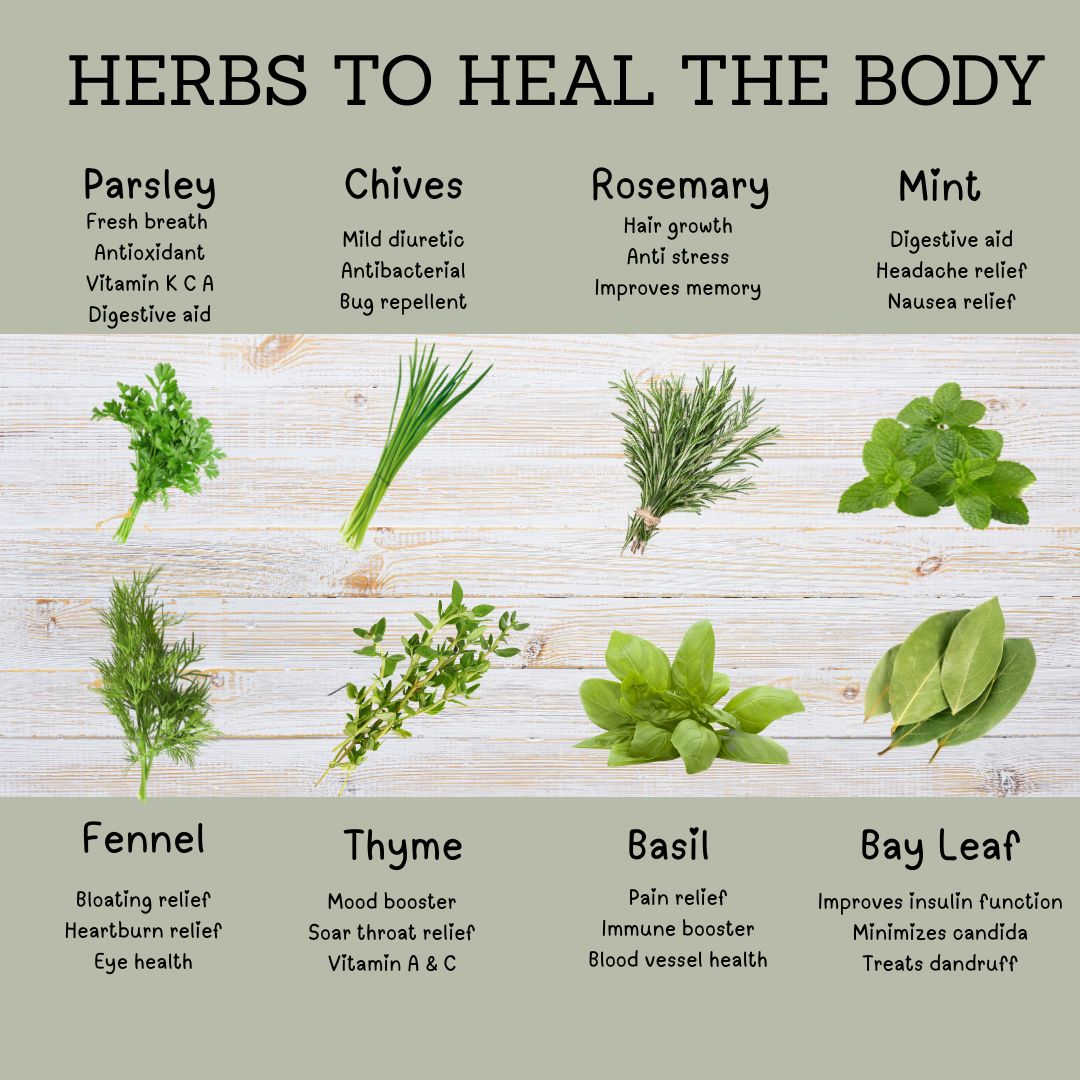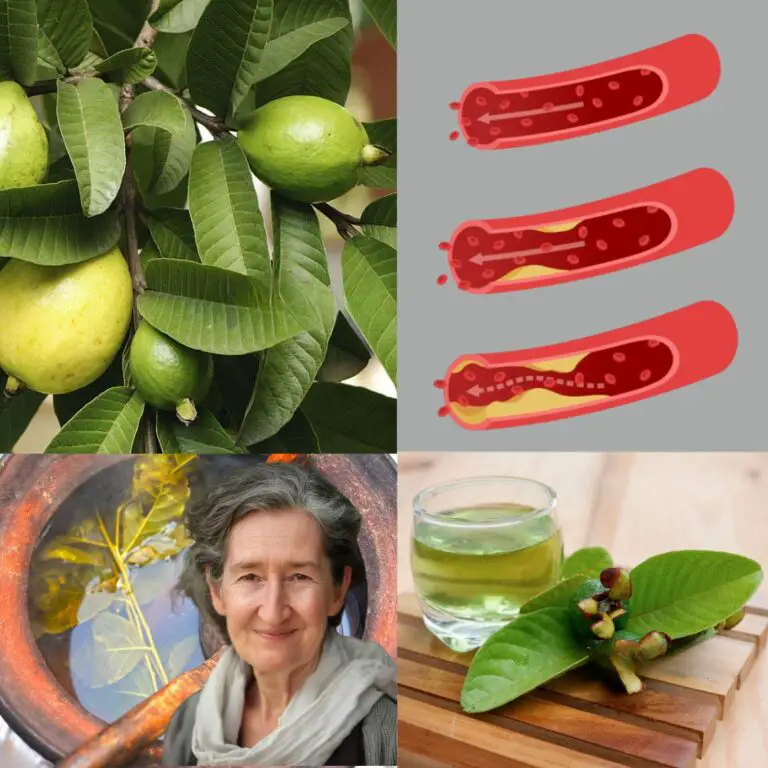Herbs to Heal the Body: Unlocking the Power of Nature’s Medicine Cabinet
Introduction
In a world overrun with synthetic medications and quick-fix solutions, it’s easy to overlook the age-old wisdom of nature. Long before pharmaceutical shelves were stocked with pills, people turned to herbs for healing—plants grown in gardens, forests, and fields, filled with life-enhancing nutrients and therapeutic properties. Herbs like parsley, chives, rosemary, mint, fennel, thyme, basil, and bay leaves have stood the test of time, cherished for their medicinal benefits across cultures and centuries.
These herbs don’t just add flavor to your food—they provide potent health support. From improving digestion to reducing inflammation and even enhancing cognitive function, these healing plants are easy to incorporate into your daily routine.
Why You’ll Love This Herbal Infusion
Imagine a warm, soothing drink that not only delights your senses but also supports your immune system, detoxifies your body, and boosts your energy. That’s exactly what you’ll get with this herbal infusion—a holistic recipe that taps into the healing properties of herbs to nourish your body from the inside out.
This blend is:
- Easy to prepare
- Cost-effective compared to store-bought supplements
- Completely natural with no synthetic additives
- Backed by both traditional wisdom and modern science
Looking for more stress-relieving natural drinks? Try our Natural Remedies for Stress Relief guide to explore relaxing teas and tonics.
Ingredients
To prepare your body-healing herbal infusion, gather:
- 1 tbsp chopped parsley
- 1 tbsp chopped chives
- 1 tbsp chopped rosemary
- 1 tbsp chopped mint
- 1 tbsp chopped fennel fronds
- 1 tbsp chopped thyme
- 1 tbsp chopped basil
- 2 bay leaves
- 4 cups of filtered water
- Optional: 1 tsp honey or a slice of lemon
Necessary Tools
- Saucepan or kettle
- Teapot or heat-safe pitcher
- Fine mesh strainer or tea infuser
- Knife and chopping board
- Measuring spoons
Ingredient Swaps and Additions
No fresh herbs? Use dried versions at one-third the quantity. Want to enhance flavor or effects? Try:
- Sage: Known for antimicrobial properties
- Ginger root: Adds warmth and helps with nausea
- Lemon balm: Calms the nervous system
Step-by-Step Instructions
- Wash & Chop: Rinse herbs and finely chop them to release oils.
- Boil Water: Heat 4 cups of water in a kettle or pot.
- Infuse Herbs: Add herbs and bay leaves to a teapot or jar.
- Pour & Steep: Pour boiling water over the herbs. Cover and let steep 10–15 minutes.
- Strain: Remove the herbs using a fine strainer or tea infuser.
- Serve: Enjoy warm or cold. Add honey or lemon to taste.
Want to dive deeper into natural digestion support? Our Herbal Teas for Digestive Health guide has more recipes you’ll love.
Pro Tips for Success
- Use organic herbs when possible to avoid chemicals.
- Let the infusion sit longer (up to 30 mins) for a stronger brew.
- Keep leftover infusion refrigerated, and drink within 24 hours.
- Always listen to your body—some herbs may not agree with everyone.
For more tips, see the National Center for Complementary and Integrative Health‘s safety overview.
Serving Suggestions
- Morning tonic to awaken your senses
- Midday detox paired with a light salad
- Evening wind-down after a stressful day
Serve over ice in the summer or add cinnamon in the winter for a comforting twist. Consider using this tea as a base for broths or smoothies—multi-functional and healing.
Storing and Reheating
- Refrigerate in a sealed container for up to 24 hours.
- Reheat gently on the stove. Avoid boiling again to preserve nutrients.
- Store in a glass jar to maintain flavor and freshness.
Nutritional Information (per serving)
- Calories: 5 kcal
- Carbs: 1g
- Fiber: 0.3g
- Vitamin A: 10% RDI
- Vitamin C: 15% RDI
- Iron: 5% RDI
- Calcium: 4% RDI
Want to learn which herbs are high in antioxidants? Don’t miss our Antioxidant-Rich Foods article.
FAQs
1. Can I drink this every day?
Yes, but vary the herbs occasionally and monitor how your body responds.
2. Can I use this infusion for cooking?
Absolutely. Use it as a broth or base for soups, sauces, and grains.
3. Are these herbs safe during pregnancy?
Not all herbs are pregnancy-safe. Consult your healthcare provider first.
4. Can children drink this infusion?
Yes, in small amounts. Avoid strong herbs like rosemary for young kids.
5. What are some other uses for these herbs?
Try them in herbal baths, homemade oils, or even skin tonics.
You can also explore clinical research on each herb through PubMed.
Conclusion
Nature has always provided what we need to thrive—herbs are just one of many gifts we often overlook. By including parsley, chives, rosemary, mint, fennel, thyme, basil, and bay leaves in your routine, you’re embracing a centuries-old path toward holistic health. This infusion is more than a beverage—it’s a ritual of wellness, rooted in tradition and backed by science.







